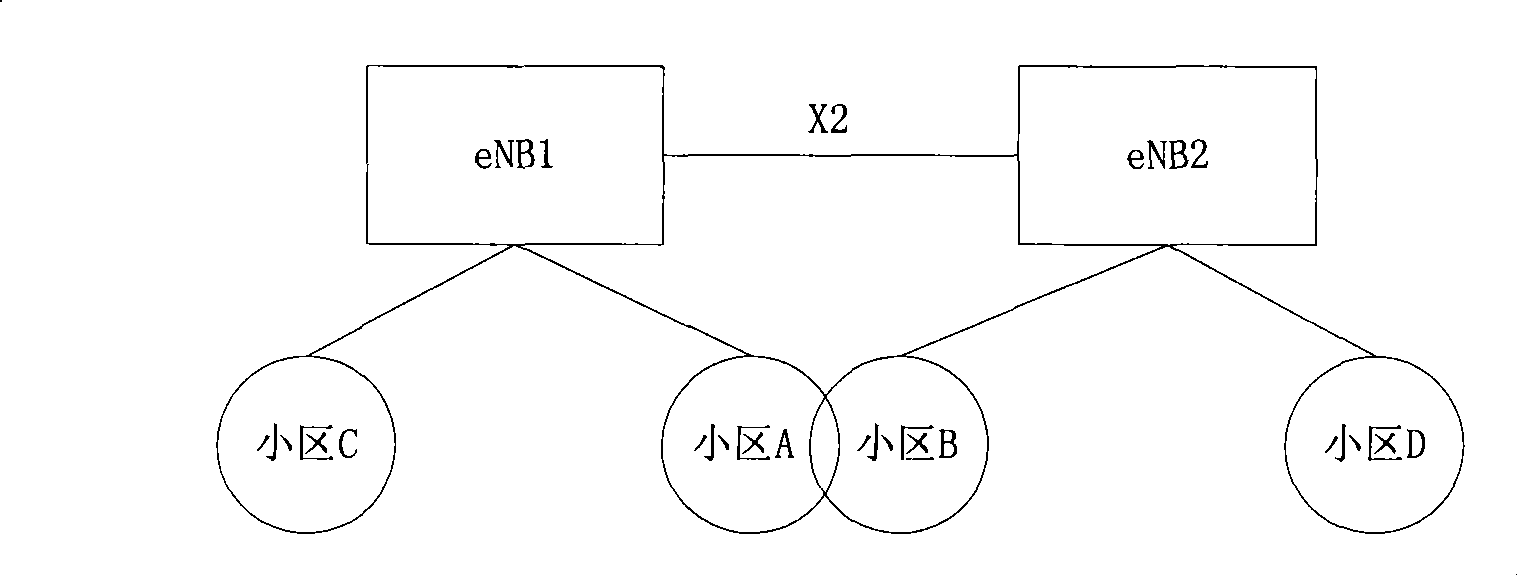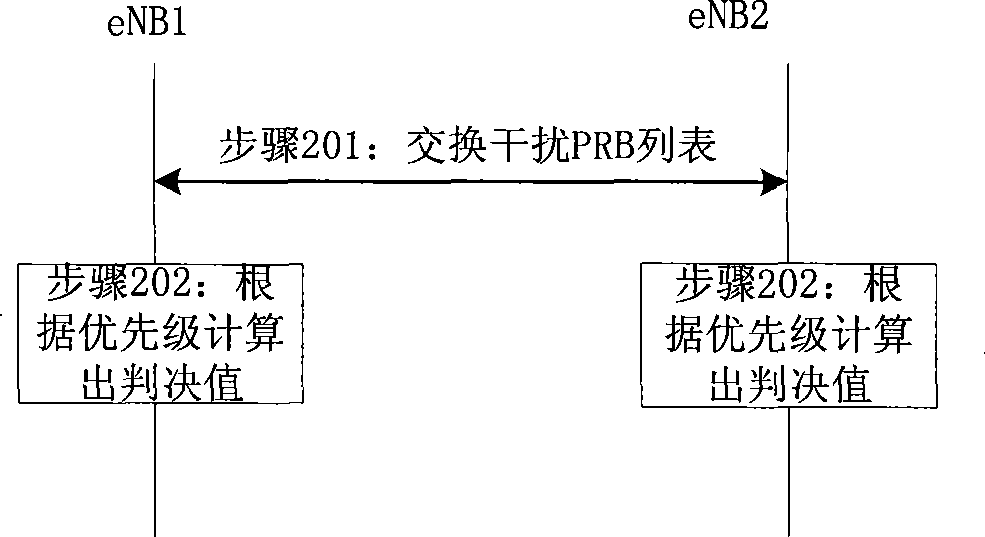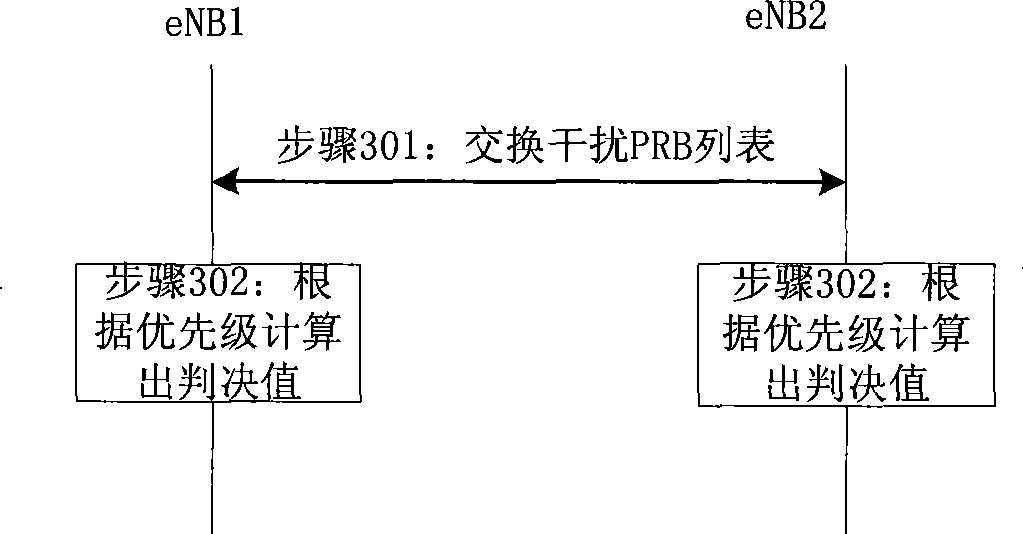Method for coordinating district interference
A technology of cell interference and receiving interference, applied in the field of communication, can solve problems such as waste of system resources, frequent ICIC, unreasonable and fair ICIC, etc., and achieve the effect of improving system performance, fair and reasonable ICIC, and improving resource utilization
- Summary
- Abstract
- Description
- Claims
- Application Information
AI Technical Summary
Problems solved by technology
Method used
Image
Examples
Embodiment 1
[0021] Use the X2 interface to transfer the list of interfering PRBs between eNBs, such as figure 1 Shown is a flow chart of the embodiment of the present invention, eNB1 and eNB2 are adjacent evolved base stations, and the process includes:
[0022] Step 201: eNB1 exchanges interference PRB lists with eNB2;
[0023] In this embodiment, two neighboring cells respectively belonging to the two eNBs use the interfering PRB at the same time.
[0024] As shown in Table 1, the interfering PRB list includes cell information using the interfering PRB, different cell types have different priorities, and user information using the interfering PRB, such as user priority. "M" in the table indicates that the corresponding parameter is mandatory, and "O" indicates that the corresponding parameter is optional.
[0025] Table 1
[0026] Cell ID (CellID) M >PRB list M >>Physical PRB ID (PRBID) M >>>Cell attribute using interference PRB O >>>...
Embodiment 2
[0039] In the embodiment of the present invention, the ICIC is performed by counting the number of users of each priority in the cell using the interference PRB and the number of users of the priority configured by the network management or specified by the algorithm of the eNB.
[0040] Such as image 3 Shown is a schematic flow diagram of Embodiment 2 of the present invention.
[0041] Step 301: eNB1 exchanges interference PRB lists with eNB2;
[0042] The list shown in Table 2 includes parameters such as the priority of users in the cell using the interference PRB, the number of users belonging to each user priority, and the like added in eNB1. "M" in the table indicates that the corresponding parameter is mandatory, and "O" indicates that the corresponding parameter is optional.
[0043] Table 2
[0044] Cell ID M >PRB list (PRBlist) M >>PRB ID (PRB ID) M >Cell attributes using interfering PRBs O > Cell priority using inte...
PUM
 Login to View More
Login to View More Abstract
Description
Claims
Application Information
 Login to View More
Login to View More - R&D
- Intellectual Property
- Life Sciences
- Materials
- Tech Scout
- Unparalleled Data Quality
- Higher Quality Content
- 60% Fewer Hallucinations
Browse by: Latest US Patents, China's latest patents, Technical Efficacy Thesaurus, Application Domain, Technology Topic, Popular Technical Reports.
© 2025 PatSnap. All rights reserved.Legal|Privacy policy|Modern Slavery Act Transparency Statement|Sitemap|About US| Contact US: help@patsnap.com



